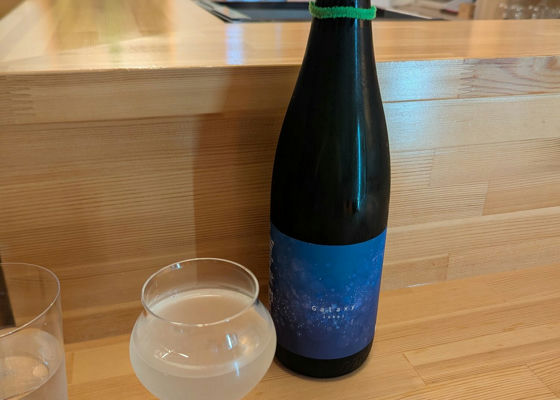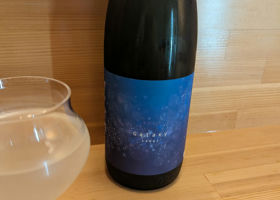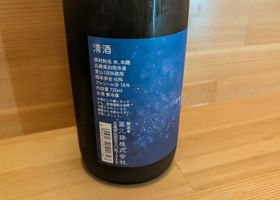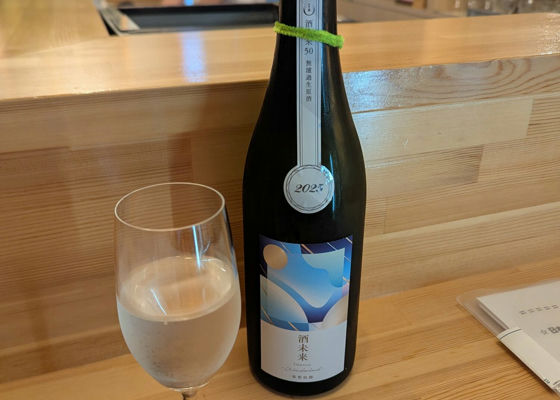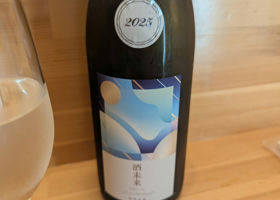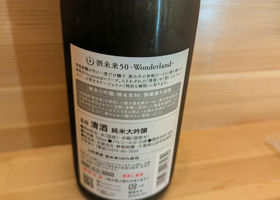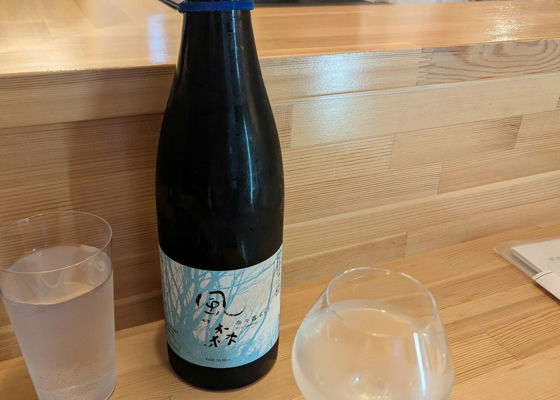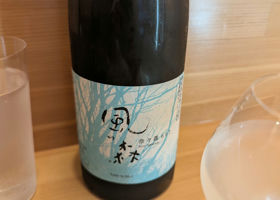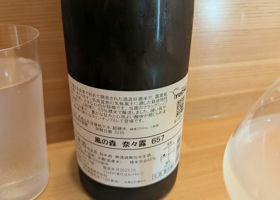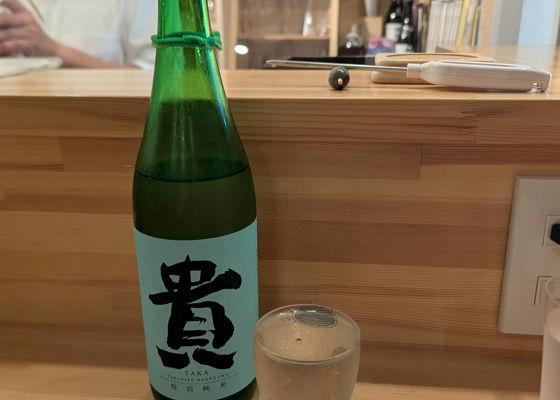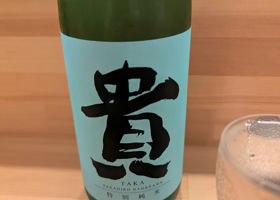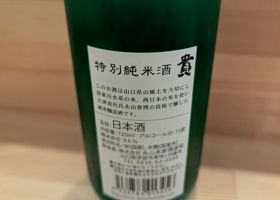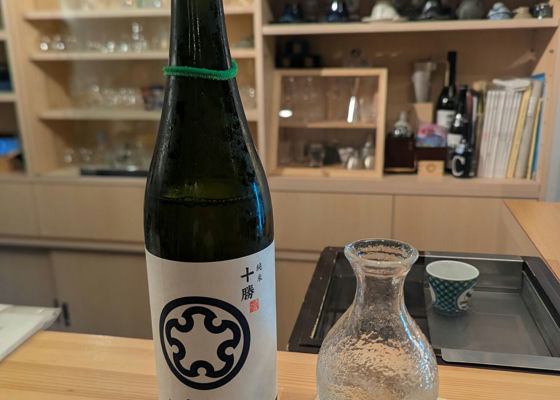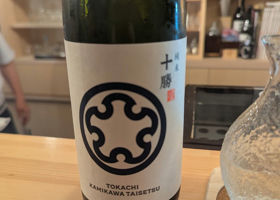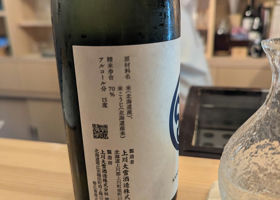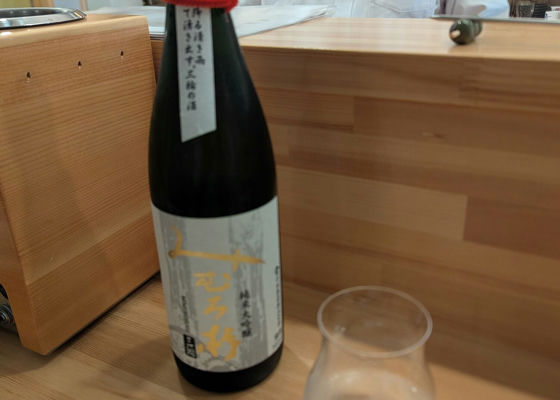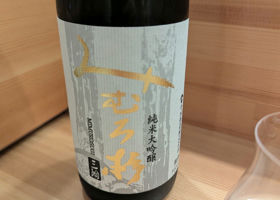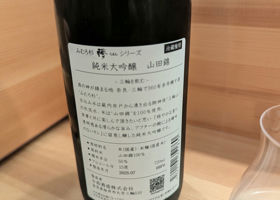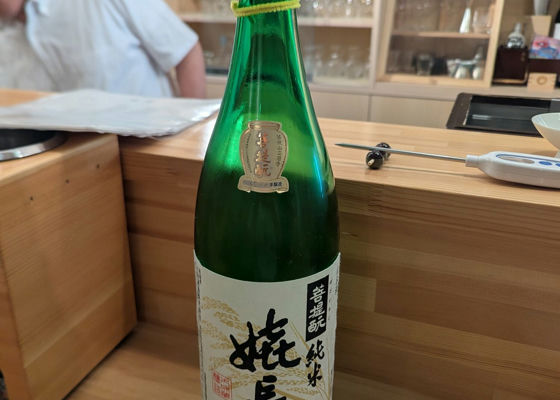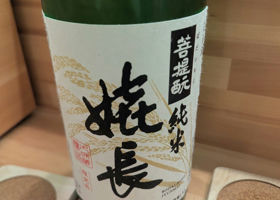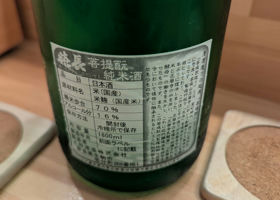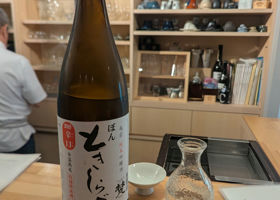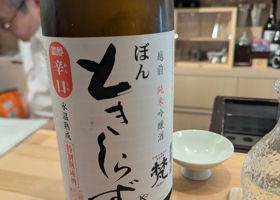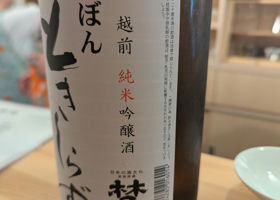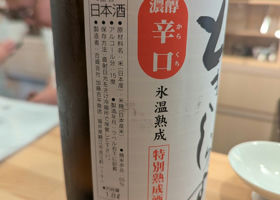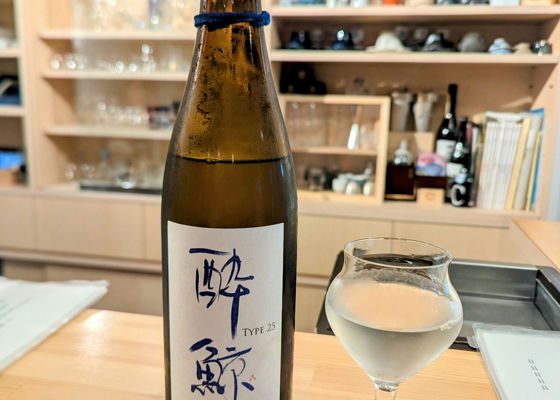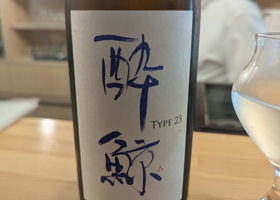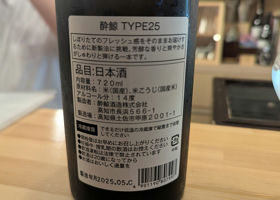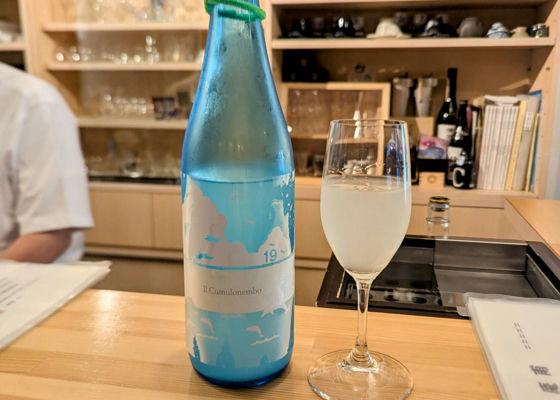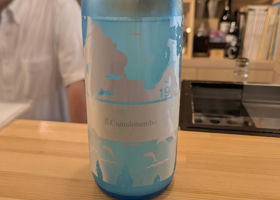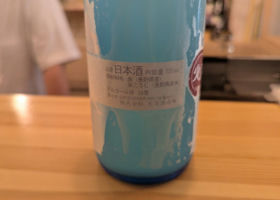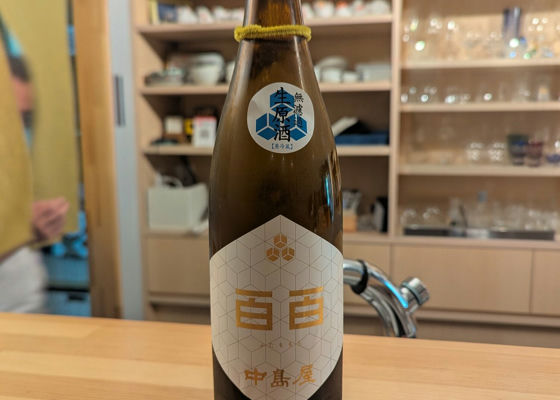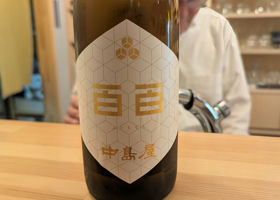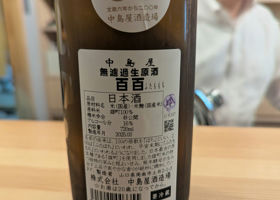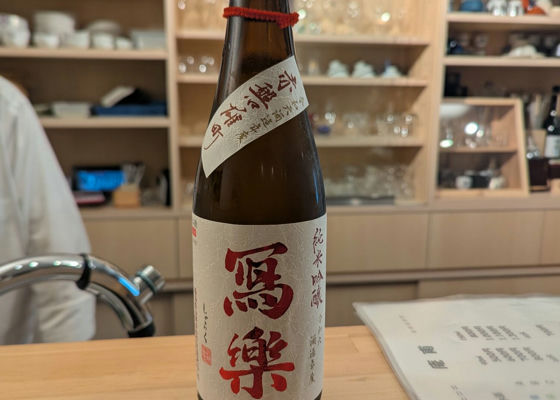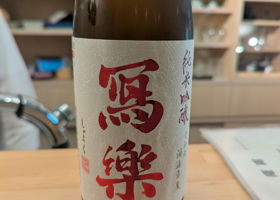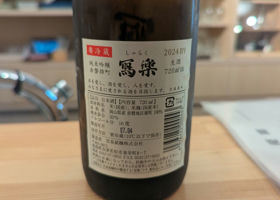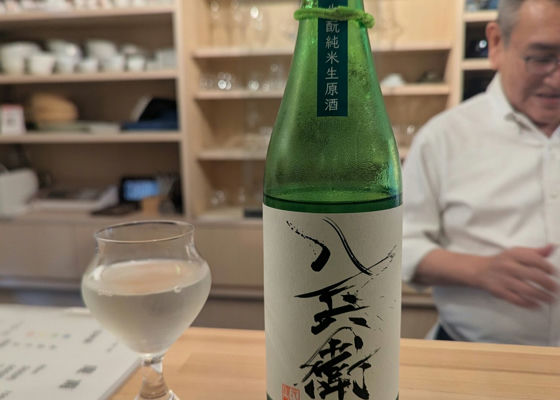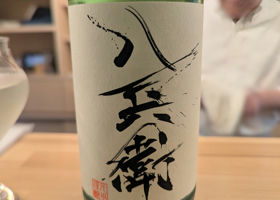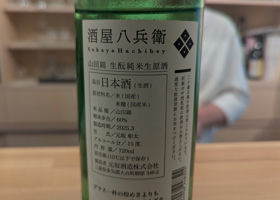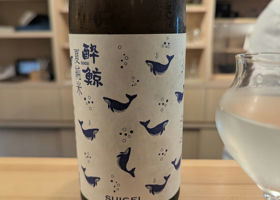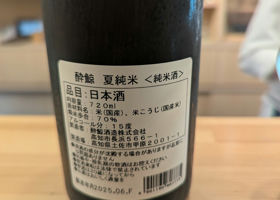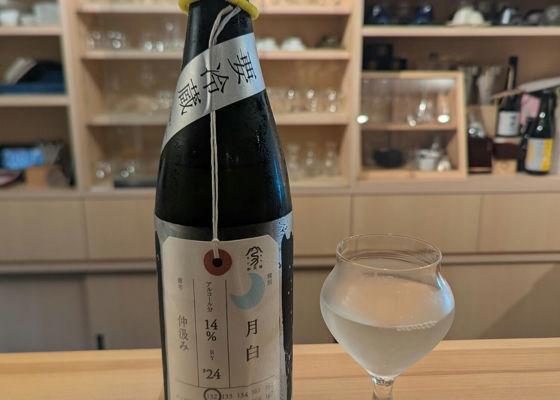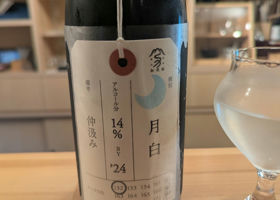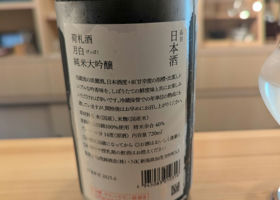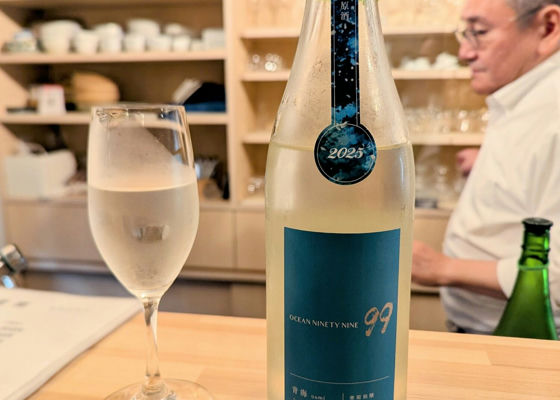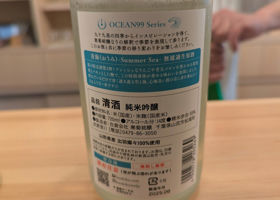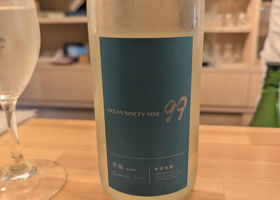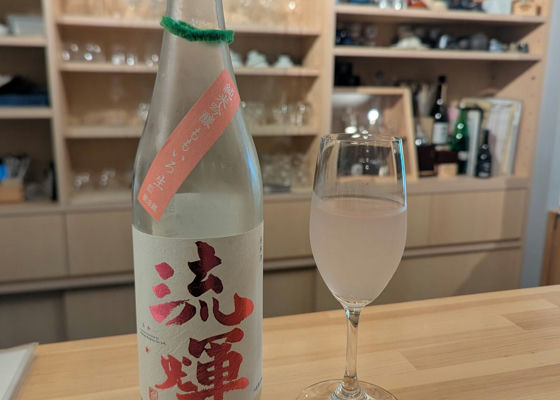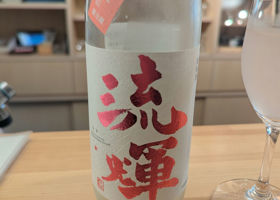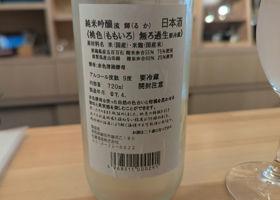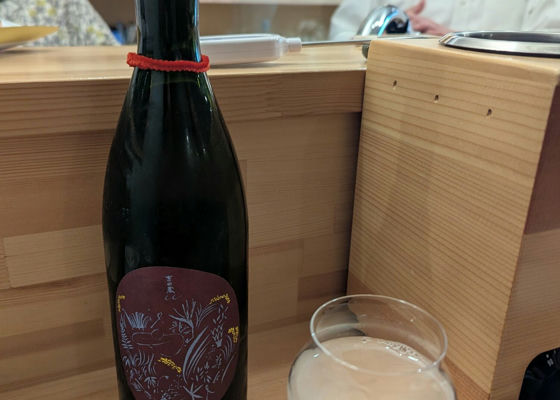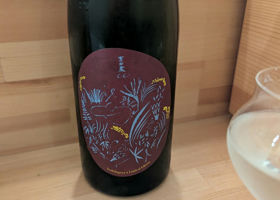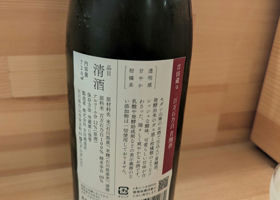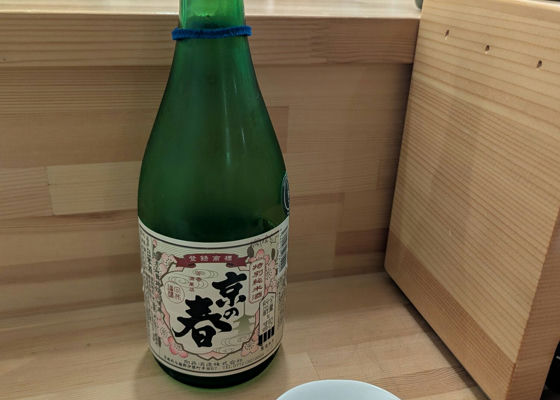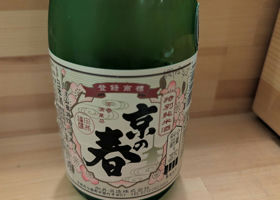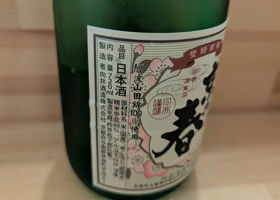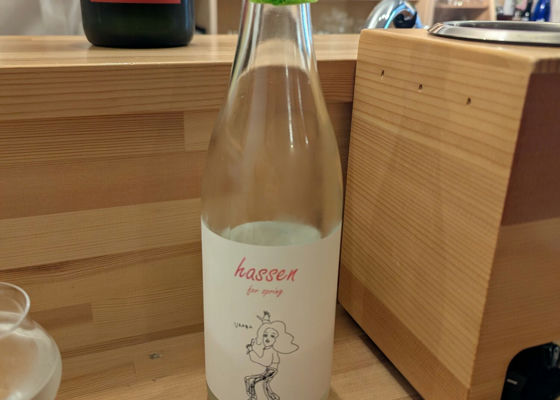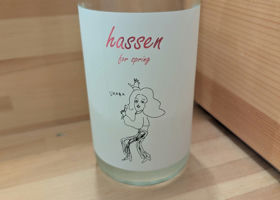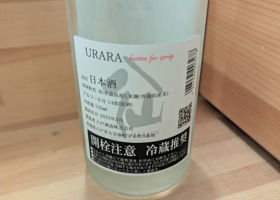Timeline
Junsei愛山 Galaxy label純米吟醸生酛生酒おりがらみ 南十字輝7/10
Tomihisa Nishiki pure blue.
The flavor is rich and thick, as if it were orikara-mi.
The umami of the rice can be felt well.
It was quite an elegant sake with a sweetness similar to that of Aizan. 南十字輝7/10
Sake Mirai of Kangiku is sure to be delicious.
Was there one last year? This is my first time to drink it.
The soft sweetness and gorgeous aroma are irresistible.
It tastes like it has been made clearer with its chrysanthemum-like flavor. 南十字輝6/10
Kaze no Mori is made from Nara Prefecture's new sake rice, Nanaro. I think I drank it for the first time.
It had a softly sweet aroma but was refreshing and somewhat dry. 南十字輝6/10
A standard sake of Ki.
It has acidity and a strong umami taste.
At this point, I was on my 6th glass, so I was pretty exhausted.
After this, we closed the restaurant and went to karaoke together.
What kind of night was this? 南十字輝7/10
I got this one with the intention of drinking it warmed up.
I wasn't expecting it, but it heated up very well.
I would recommend drinking it at about 45 degrees. 南十字輝8/10
Mimuro cedar, which I haven't had in a while, is very tasty.
The person I drank it with yesterday said that he couldn't find a better sake than Mimuro Cedar, which makes me think so. 南十字輝8/10
This was also served hot.
It is a Bodhi yeast with a little bit of a peculiar taste, and it seems to warm up when it is heated.
It goes really well with ham katsu senbei (ham cutlet rice crackers).
This one is good too. 南十字輝7/10
I brought ham katsu senbei (ham cutlet crackers) to the restaurant and drank them with heated sake!
The owner and I verified that ham cutlet crackers go well with heated sake.
We concluded that it does.
It's like a wet rice cracker with a strong flavor.
It would have been better with a more robust sake. 南十字輝6/10
It seems to be a new sake from Drunken Whale.
It really doesn't taste like Drunken Whale at all.
It is fruity but has a clear taste.
Is this what makes it like Drunken Whale?
I wonder what "TYPE25" means. 南十字輝7/10
Nineteen Summer Liquor.
Rumney from the bottle.
It has a sour taste and becomes rich in the latter half.
Refreshing. 南十字輝7/10
A product commemorating the 200th anniversary of Nakashimaya's founding.
It is called Futamomochi.
It is made from "Mame-no-en Omachi," which is often heard of these days.
The impression is that it has just the right amount of flavor and just the right amount of aroma.
The taste is rather dry, and you can savor it in your mouth while slowly drinking it down your throat.
The slight sweetness is a nice accent. 南十字輝7/10
We already know that Sharaku is very good, and since it is Akaban Omachi's seasonal sake, it has a very convincing taste.
It is a sake with umami, fruity aroma and sharpness on the palate, with no gaps in the beginning, middle and end stages. 南十字輝8/10
This is Hachibei's seasonal sake.
It was quite mild and flavorful, a sake that could be drunk slowly.
It may be austere in taste, but it is a very good sake. 南十字輝7/10
Summer sake from Drunken Whale.
I didn't expect much (pardon the pun), so I found it quite tasty.
It has a dryness that is typical of drunken whales, and the umami flavor is on top of that.
I think it would go well with sashimi or soy sauce.
I was eating kelp, so it was pretty good. 南十字輝8/10
I can't tell you how many times I've drank this packaged sake, Tsukihaku.
This is always good.
It is rather dry, but has a rich and umami flavor.
It has a nice sharpness to it and is very enjoyable to drink in the mouth.
I wish I could drink it at home all the time. 南十字輝6/10
It's a summer sake from Kangiku.
I thought the OCEAN99 series were all daiginjos, but they are not.
The first sip is quite dry.
After that, there is a fruity aroma.
Since it was the first sip, the impression may be a little hard.
It is a good sake with a Kangiku character. 南十字輝5/10
Ryuki no momoiro. It's made with red yeast.
It's amazing because it's unfiltered and 9 degrees Celsius.
It's great, but it's too sweet.
It is often said that it is like juice, but this is already juice.
It was more like juice with a touch of yogurt. 南十字輝7/10
Yoshida Kurau's kijoshu,
I thought it would be sweet because it is a kijo-zake, but it was not so much.
It is a 12% sake, so it is a bit lacking in sweetness, but the acidity and slight sweetness are convincing.
It would be fun to start thinking about the marriage. 南十字輝7/10
Mukai Sake Brewery is well-known for Ine Mangaka.
The image of the brewery is that they have a variety of challenging sake.
This one is a crisp sake made with 100% Awa Yamadanishiki.
It is said to warm up well, so I tried it at room temperature, lukewarm, and even hot.
It certainly has a fuller flavor. 南十字輝7/10
Mutsu Hachisen's URARA label, which is already a standard. It is a spring sake.
It has a low alcohol content and is easy to drink.
It has acidity and is softly sweet, so it won't make you want to dance unintentionally, but it will make you laugh if you drink it gulping it down.
I guess people nowadays don't know who Linda Yamamoto is anymore. RecommendedContentsSectionView.title
